Key takeaways:
- Plant-based diets emphasize foods from plants, promoting flexibility rather than strict avoidance of animal products, enhancing variety and flavor in meals.
- Adopting a plant-based lifestyle can lead to significant health benefits, including increased energy, improved heart health, and heightened environmental awareness.
- Essential cooking techniques, such as sautéing, braising, and steaming, can boost confidence and creativity in the kitchen for those transitioning to plant-based cooking.
- Overcoming challenges like finding substitutes and balancing flavors is key to successful plant-based cooking, fostering culinary exploration and satisfaction.
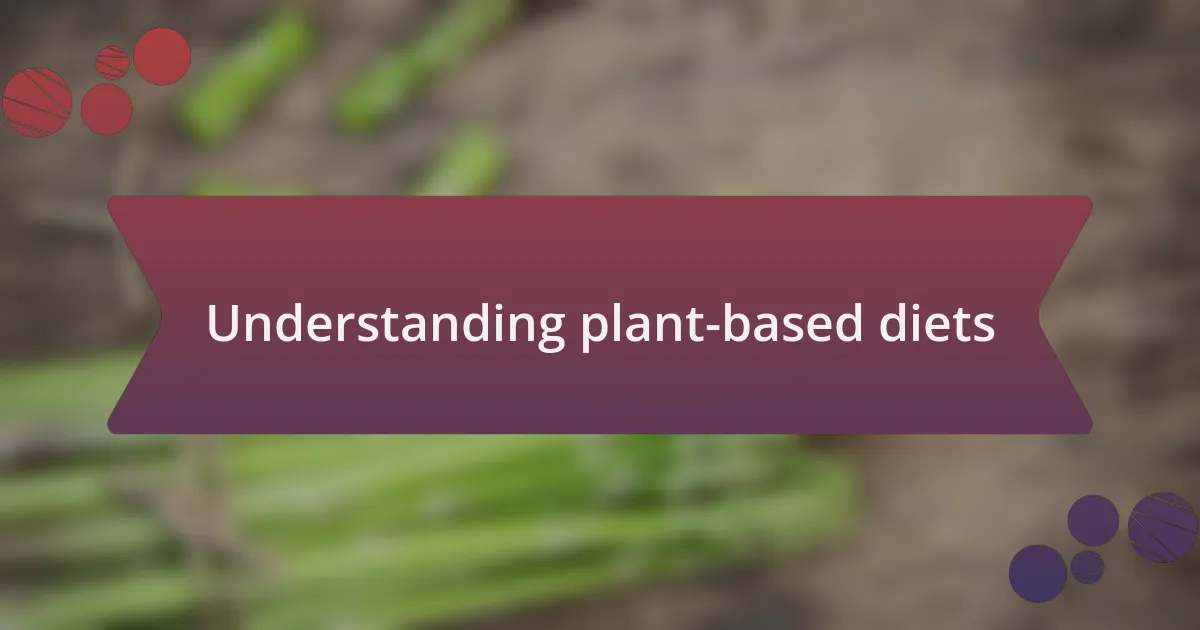
Understanding plant-based diets
Plant-based diets center around foods derived from plants, including vegetables, fruits, nuts, seeds, oils, whole grains, legumes, and beans. When I first adopted this lifestyle, I was surprised to discover just how varied and flavorful plant-based options could be—suddenly, meals became an exciting adventure rather than a chore. Isn’t it fascinating to think about all the delicious combinations nature provides us?
What sets a plant-based diet apart is its flexibility; it’s not about strictly avoiding animal products, but rather about incorporating more plant foods into our meals. I remember when I experimented with meat alternatives; it was as if I unlocked a treasure chest of flavors and textures I had never considered before. Have you ever thought about how a simple lentil stew can be just as comforting as any meat-based dish?
Nutrition plays a vital role in plant-based eating, and I’ve learned that a well-rounded diet can provide all the necessary nutrients. Initially, I was concerned about protein intake, but I found that by including a variety of sources—like chickpeas, quinoa, and nuts—I could meet my dietary needs without sacrificing flavor or satisfaction. How much do you think those vibrant, colorful plates can influence not just our health, but also our mood?
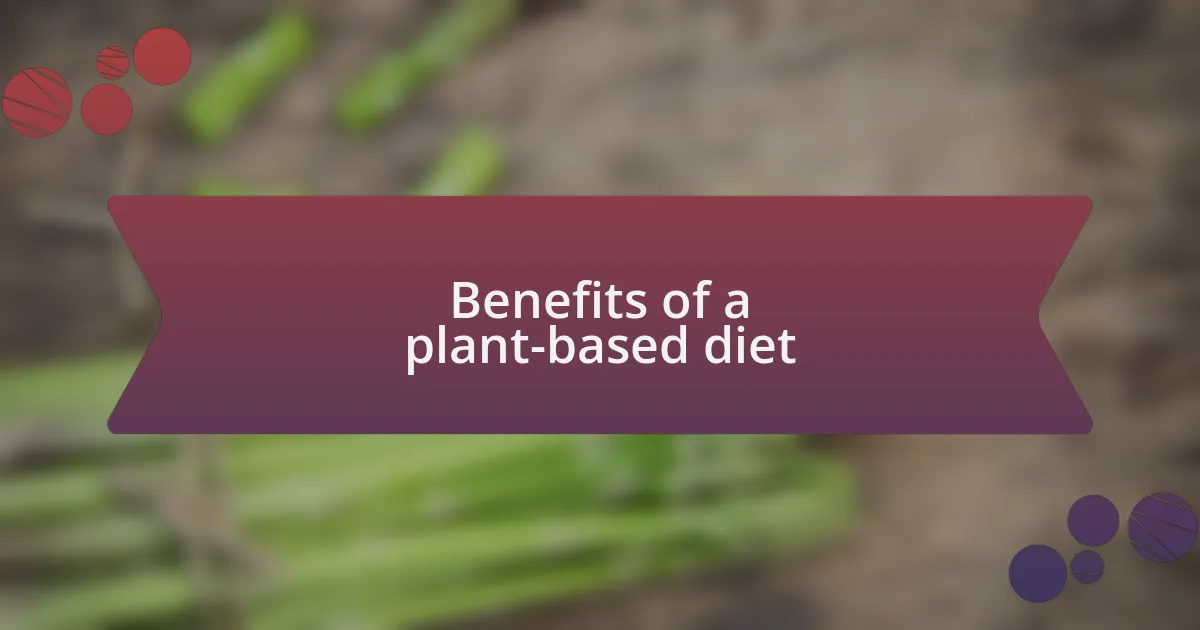
Benefits of a plant-based diet
A plant-based diet comes with a multitude of health benefits that I’ve experienced firsthand. For instance, after making the switch, I noticed an increase in my energy levels and a clearer mindset. It’s remarkable how the nutrients in fruits and vegetables can invigorate not just the body, but also enhance mental clarity. Have you felt that surge of vitality when you bite into a fresh apple or enjoy a vibrant salad?
Another significant benefit I’ve found is the potential for better heart health. I used to worry about my cholesterol levels, but shifting my focus to whole grains, legumes, and healthy fats from nuts and avocados made a noticeable difference. It’s astounding to think that by making simple food choices, we can protect our heart and perhaps even add years to our lives. How empowering is it to know that the fork we choose can lead us down a healthier path?
Lastly, embracing a plant-based lifestyle has opened my eyes to environmental awareness. Knowing that plant foods generally require fewer resources than animal products creates a profound sense of responsibility in me. I recall my surprise learning that every meal I prepare with fresh vegetables contributes to a more sustainable planet. Isn’t it exciting to think that by changing our plates, we can also help shape a better future?
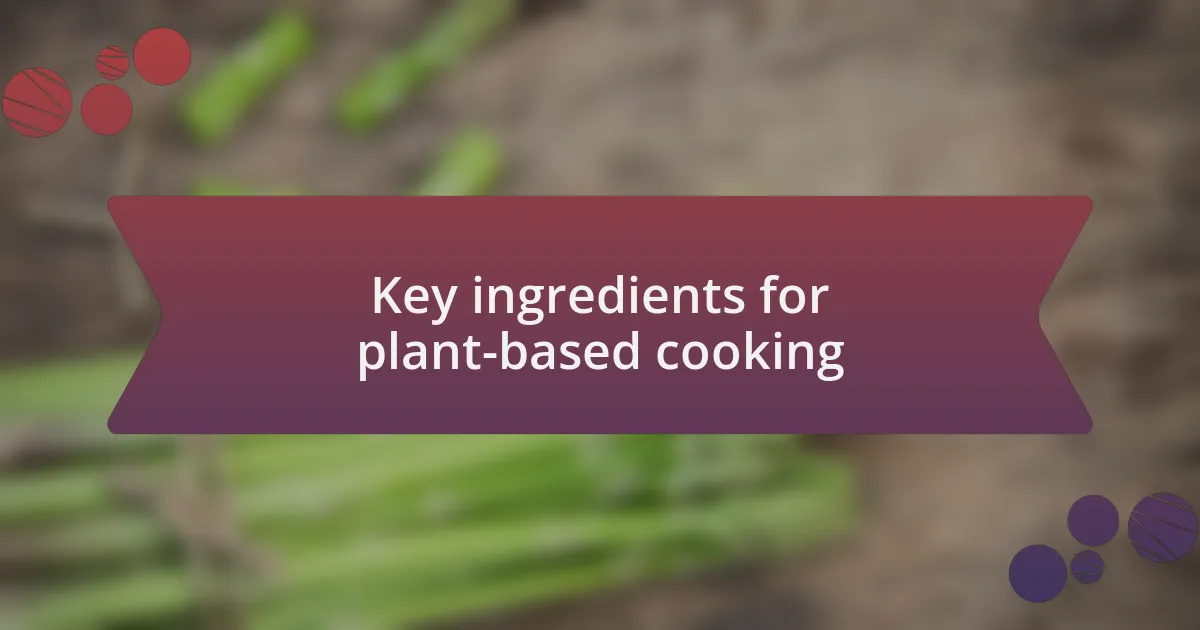
Key ingredients for plant-based cooking
When I started my journey into plant-based cooking, I quickly realized that fresh produce is a key ingredient. Vibrant fruits and vegetables not only add color to my plate, but they also bring a plethora of flavors and textures. Have you ever taken a moment to really savor the juiciness of a ripe tomato or the crunch of fresh bell peppers? These ingredients are fundamental to any plant-based meal.
Grains are another essential component of this lifestyle. Switching to whole grains like quinoa, farro, or brown rice has transformed the way I view grains entirely. I remember experimenting with a quinoa salad, and the nutty flavor paired with crisp vegetables created a dish that was both filling and nutritious. What grains do you usually cook with, and how might they fit into a more plant-focused approach?
Legumes have become one of my go-to staples as well. Lentils and chickpeas are not only versatile but also excellent sources of protein. I can still recall the first time I whipped up a hearty chickpea stew; the rich, earthy flavor was both comforting and satisfying. Have you discovered the magic of legumes in your cooking yet? They might just be the secret ingredient that takes your plant-based meals to the next level.

Essential cooking techniques for beginners
Learning essential cooking techniques is undoubtedly a game-changer for anyone venturing into plant-based cooking. One technique that truly transformed my meals was sautéing. I remember the first time I sautéed a medley of vegetables. The sizzling sound, the vibrant colors, and the enticing aroma filled my kitchen, creating an experience that made healthy eating feel so rewarding. Do you ever find chopping vegetables daunting? I used to, but now it’s almost meditative, especially when I consider all the nutrition going into my dishes.
Braising is another technique worth mastering. When I braised a batch of jackfruit for the first time, I was amazed at how it absorbed flavors and mimicked pulled pork. It’s these little victories that deepen my appreciation for cooking and keep me motivated to explore more recipes. Have you ever struggled to find substitutes for your favorite non-plant-based dishes? Learning techniques like braising can open up a world of possibilities in transforming ingredients.
Lastly, don’t overlook the power of steaming! Steaming vegetables retains their nutrients while keeping them vibrant and crisp. I vividly recall preparing broccoli this way and how it brightened not just my plate, but my mood as well. Have you noticed how fresh, beautifully cooked vegetables can elevate your entire meal? Emphasizing these techniques can help any beginner feel more confident in the kitchen, making the journey into plant-based cooking much more fulfilling.
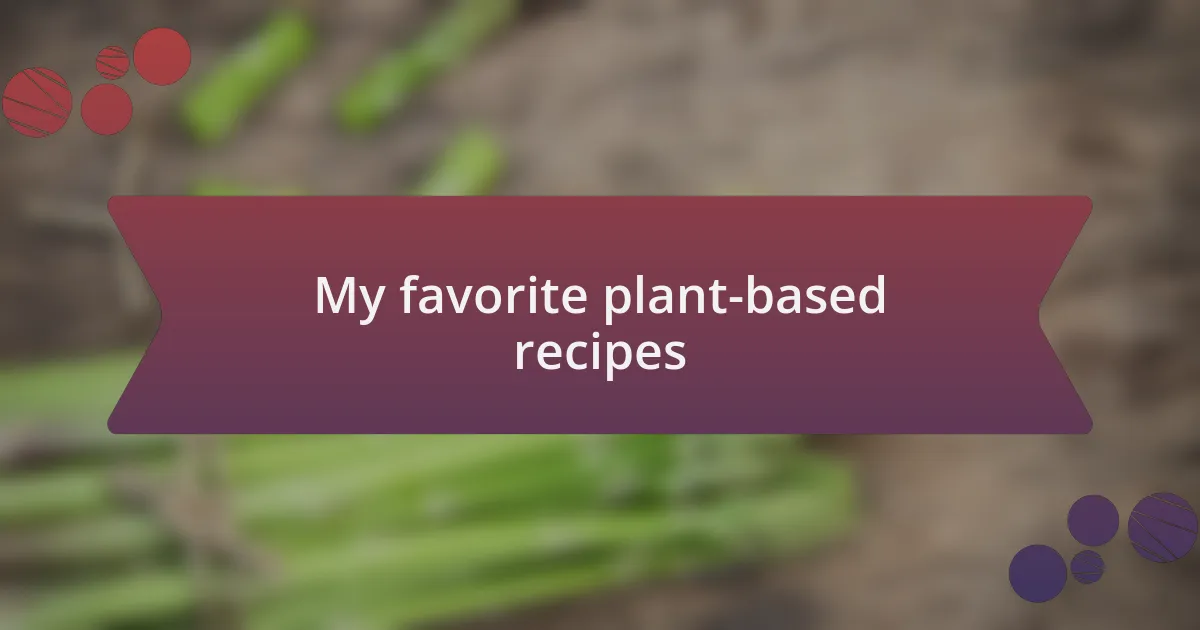
My favorite plant-based recipes
My passion for plant-based cooking truly shines through my favorite recipes. One dish that never fails to impress is my creamy coconut curry. I remember the first time I tasted it at a friend’s dinner party, and I immediately knew I had to recreate that warmth and flavor at home. The combination of tender vegetables and aromatic spices, all simmered in coconut milk, had me dreaming of tropical escapes—who wouldn’t want to bring a little sunshine to their plate?
Another standout is my quinoa-stuffed bell peppers. I stumbled upon this recipe during a busy week when I needed something quick yet nutritious. I filled those colorful peppers with protein-packed quinoa, black beans, and fresh herbs, and surprisingly, they quickly became a family favorite. The pop of flavor and crunch from each bite feels like a celebration—have you ever turned a simple recipe into a wholesome feast with just a few tweaks?
Finally, I can’t resist mentioning my go-to chocolate avocado mousse. Initially, I was skeptical about using avocados in dessert, but it has become my secret weapon. Blending ripe avocados with cocoa powder and a touch of maple syrup creates an indulgent treat that feels both decadent and guilt-free. Isn’t it incredible how versatile plant-based ingredients can be? Exploring these recipes has not only transformed my meals but also deepened my appreciation for the creativity that comes with plant-based cooking.
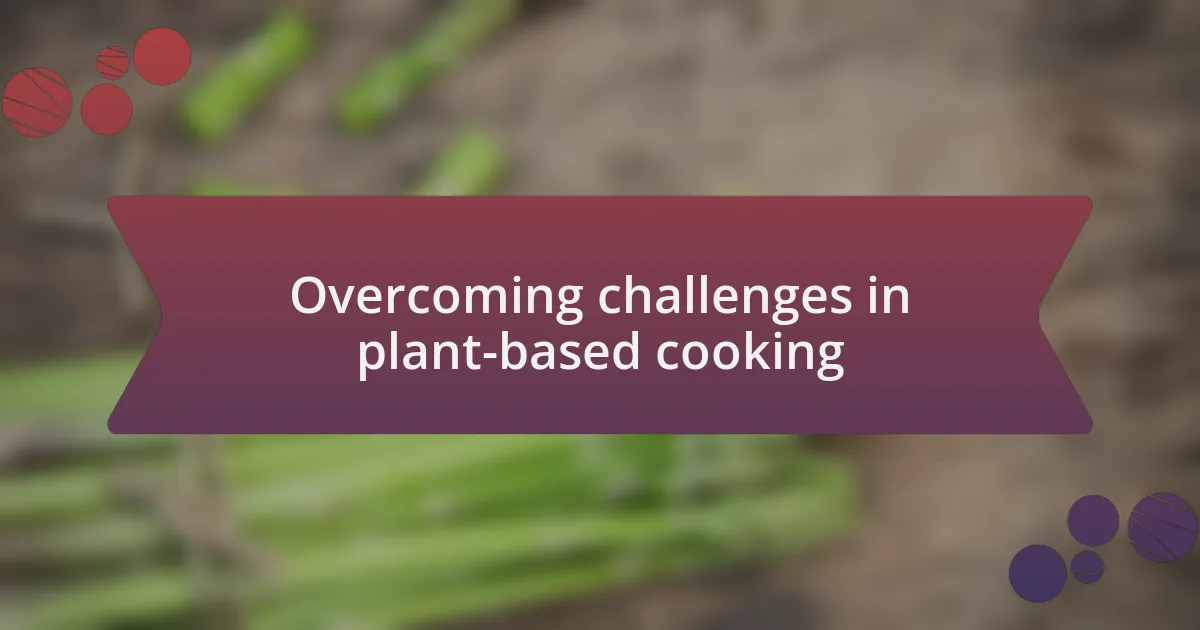
Overcoming challenges in plant-based cooking
Cooking plant-based meals can sometimes feel intimidating, especially when it comes to finding the right substitutes for beloved ingredients. I remember my first attempt at making a vegan lasagna. I was puzzled about how to replace the ricotta cheese, a staple in traditional recipes. After a bit of experimenting, I discovered that blended tofu, nutritional yeast, and a splash of lemon juice created a creamy texture that was just as satisfying. Have you ever stumbled upon a replacement that surprised you with its effectiveness?
Another challenge I often face is ensuring that my meals are balanced and satisfying. Early on, I would occasionally end up with dishes that were either too light or lacking in flavor. I learned the importance of incorporating a variety of textures and tastes—think crunchy, creamy, spicy, and savory—to create a truly fulfilling meal. Now, I always ask myself: does this dish have enough depth? If the answer is no, I know it’s time to enhance it with herbs, spices, or a sprinkle of seeds for that added crunch.
Grocery shopping for plant-based ingredients can also feel overwhelming, especially with so many options available. I vividly recall the first time I walked down the aisles packed with unfamiliar grains and legumes. Instead of feeling daunted, I decided to embrace the adventure. I picked up a few things on a whim—like farro and lentils—and challenged myself to figure out how to incorporate them into my meals. It turned out to be an exciting journey of discovery, allowing me to expand my culinary horizons in ways I never imagined. Have you ever turned a shopping trip into an opportunity for exploration?